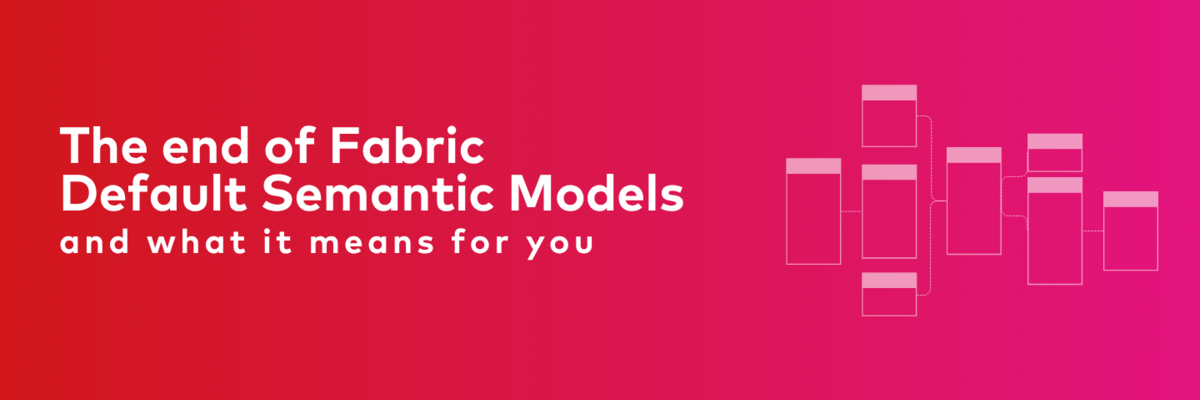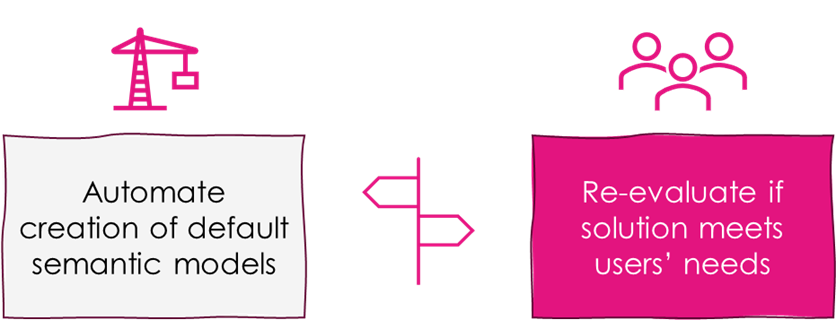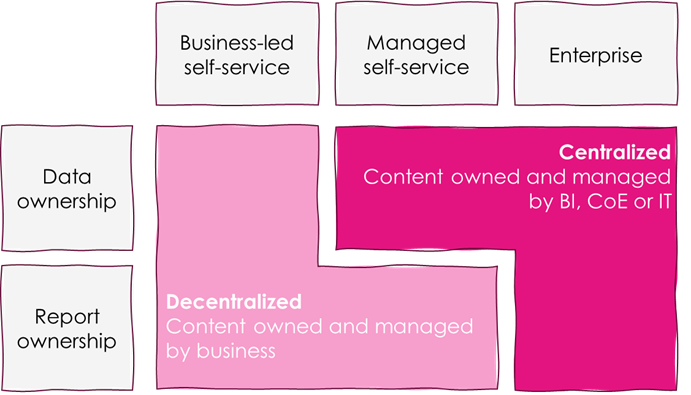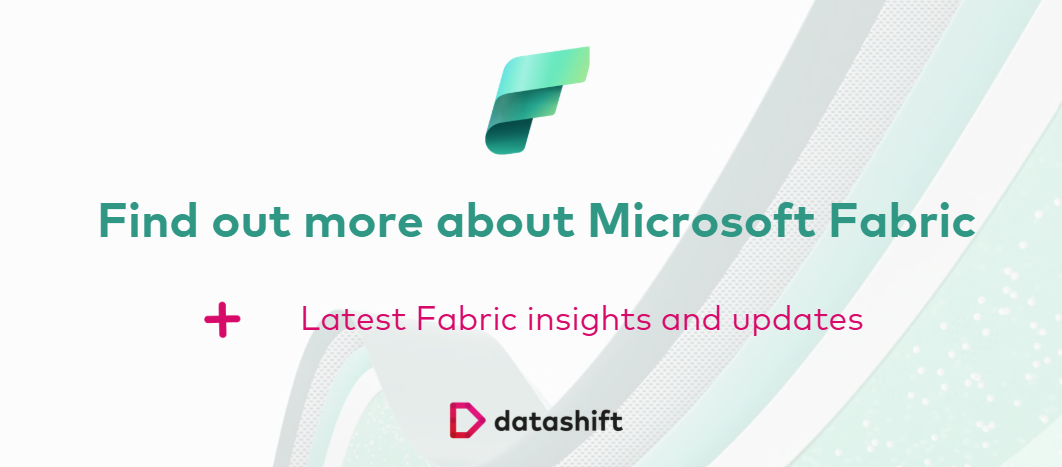The end of Fabric Default Semantic Models and what it means for you
5 August 2025

In an earlier blog post, we wrote about the power of default semantic models, and how they were a convenient out-of-the-box model we can offer our users. Microsoft has announced they will be sunsetting the default semantic models, effective December 2025. But what does this mean for you and the default semantic models in your organization? We’ve got you covered with this new blog post! Here are the two changes and how they can impact you. In the end we give you our straightforward advice.
Change #1 No more out-of-the-box models
The Fabric warehouses, lakehouses, SQL databases and mirrored databases will no longer automatically come with a default semantic model Power BI can plug into.
This means that you can no longer rely on the convenience of these out-of-the-box models and will have to instead create them manually or set up a solution to automate their creation if desired. The Semantic Link Labs functions you can run in Fabric notebooks are great to get started with automation.
What now?
Try considering this change however as an opportunity to re-evaluate the landscape. Questions like: “Do default semantic models meet the needs of our users?” and “Have our users’ needs evolved, and if so, how can we best support them?” might bring you to the conclusion that a lift-and-shift approach that just replaces the old with a new automation is rarely the right answer.

Change #2 Any existing default semantic models will require users to own and manage them
The models will continue to function but lose their “default” status and become regular semantic models that require an owner. From a governance perspective this makes sense, as data assets should always have someone accountable for their quality. For your organization however, this might lead to headaches over identifying who will “take over” and own every default semantic model.

The clearer your current governance model, the more straightforward this decision will likely be. In an enterprise governance model, for example, the members of the BI Centre of Excellence are probably good candidates to take over. For business-led self-service, champions in business units could be put in charge.
It’s not yet known how ownership of the default models will transfer in the future, but in the current UI workspace contributors can click the green “Take over” button to become owner of a semantic model.

The current state of the default semantic models: no single user owns them. This will change.

Our advice for the future of your semantic data models
Microsoft’s decision to sunset the semantic models may seem counterintuitive. Why take away something that was there and worked fine? Well, semantic models are supposed to be the trustworthy backbone of your Fabric ecosystem. Without someone owning the model, it becomes hard to start addressing the data quality issues that are detrimental to the trusted status semantic models should have. With these changes, every semantic model will require someone to be owner and be responsible for its quality.
Time for action
We believe these changes are a signal to take action: evaluate whether default semantic models truly meet your users’ needs, define what an ideal replacement should deliver, and assign clear ownership to ensure these models continue to drive value in the future. These efforts will in the end simplify and improve the manageability, and governance of Fabric.

